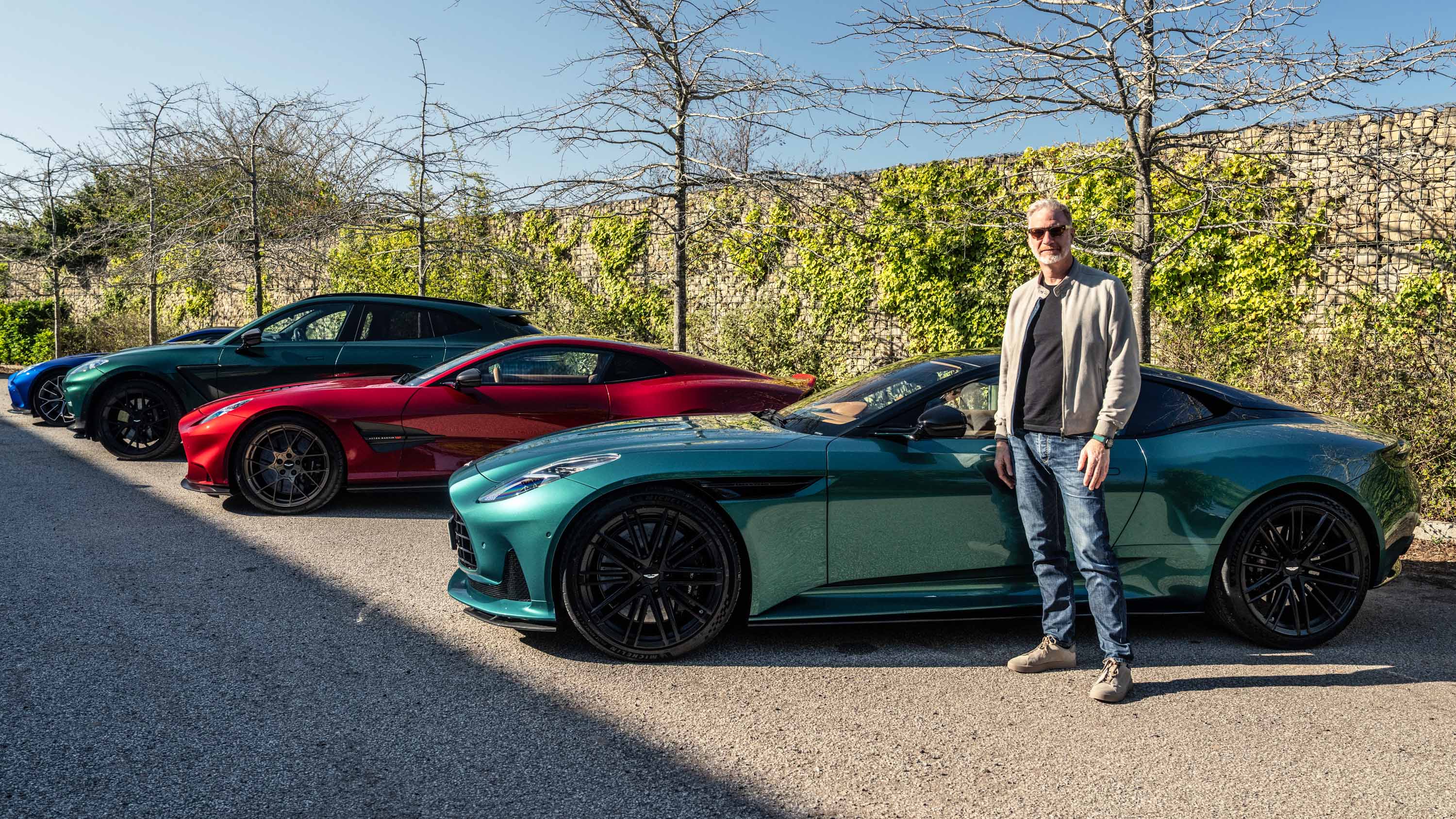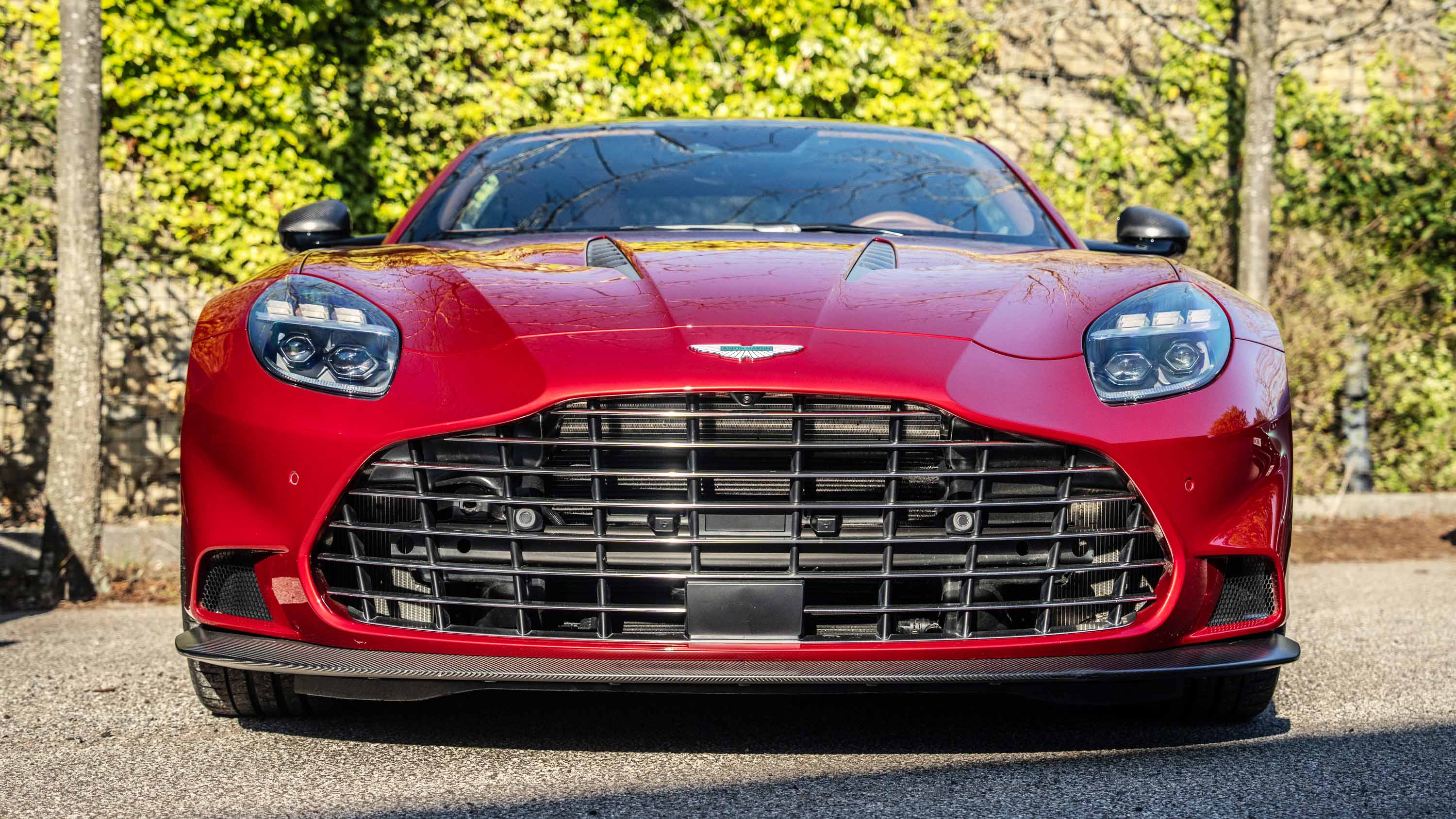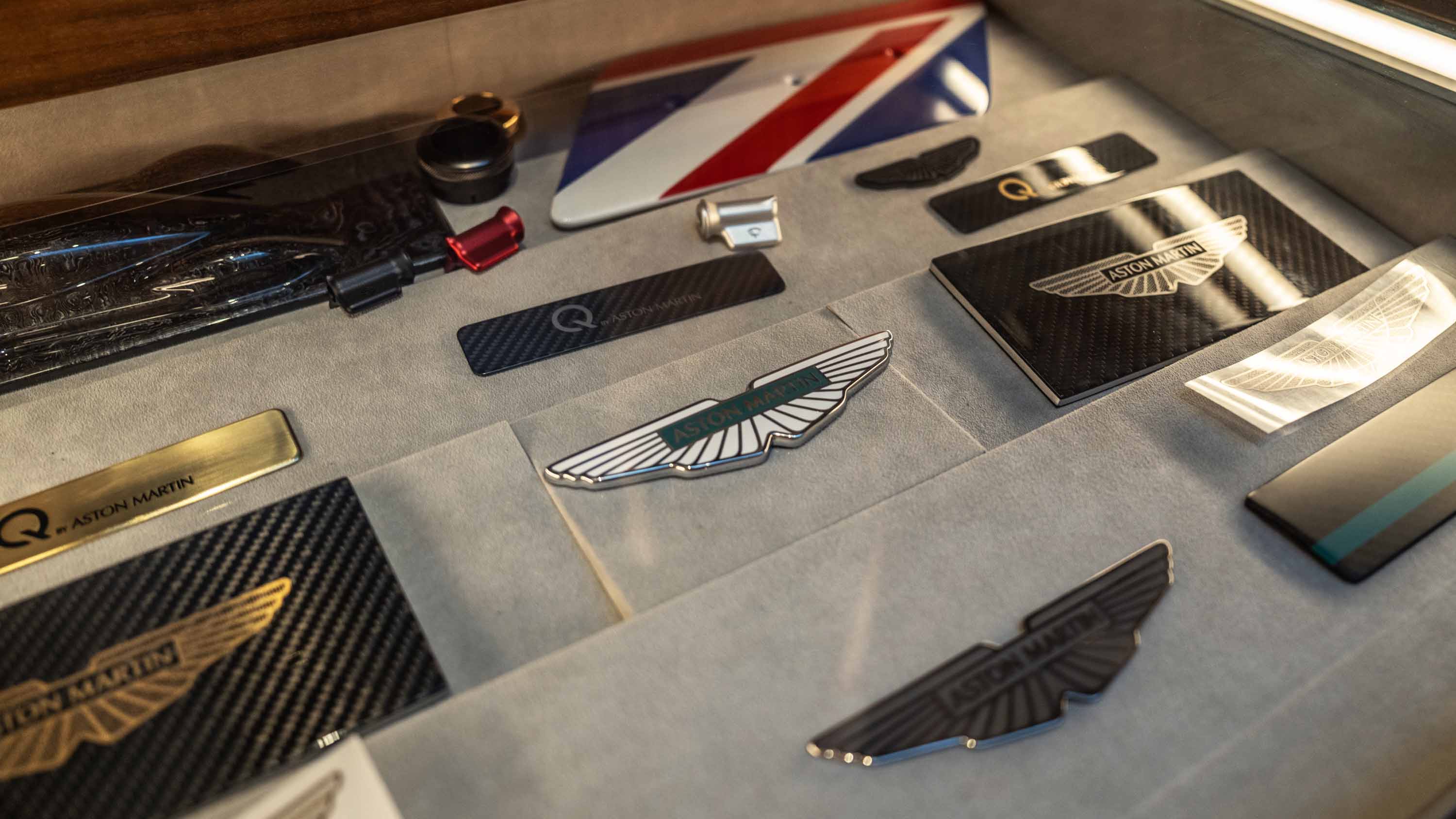
SPEC HIGHLIGHTS
- SPEC
Aston Martin DB12
- ENGINE
3982cc
- BHP
670.5bhp
- 0-62
3.6s
96 per cent of all Aston Martins ever built still exist, because they look so good. Here's why
Beauty, famously, is in the eye of the beholder. But ever since I’ve been behind the wheel of our Aston Martin DB12, there seems to have been an increase in beholders. They pop up like wet gremlins, offering their admiration in car parks, at petrol stations, pulling out their phones at traffic lights and shouting “That’s GAWWWJUSSS!” from cab windows down the M4.
Which got me thinking: is there a way to make the subjective quandary of beauty objective? Could beauty in cars – particularly modern Aston Martins – be measured, if not by tape, then perhaps by involuntary public reaction? Because, if that’s the case, the current crop of Astons (and the DB12, given my firsthand experience) are some of the most beautiful cars on the road.
But what are people actually reacting to? The shape? The proportions? The colour? The badge? Or is there something less tangible at play? To try and qualify my very unscientific survey, I took our long-term DB12 back to its birthplace at the Gaydon factory, parked it alongside its immediate family – a Vantage, a DBX 707, and the all-new, even more pin-up-worthy Vanquish – and asked the man behind the lines, Aston Martin’s chief creative officer Marek Reichman, if he could explain why strangers stop mid-sentence to stare.
“You tell me why they’re beautiful,” he said.
Not the answer I came for – and it made me wonder if it was going to be a wasted four-hour round trip. But then Reichman opened up, insisting that car design is less about diktats and more about seduction with the DB12.
“The DB11 was a striking car, but the 12 is dominantly striking. It’s got an appropriate grille that supports the increased drivability – more cooling, more aero – but it’s also a more stately object now. It’s more of that noble rogue you’d expect.
“As a designer, as a creative – all of us, the entire company – we’re existing in two worlds,” Reichman explained. “We’re in the automotive space, yes, but we’re also in the luxury world. The world of being noticed.”
And being noticed matters. If you drive an Aston Martin, people look. “They are consciously thinking about who you are. You’ve got to be conscious. We’re designing and engineering within that context.”
The idea, it turns out, wasn’t to make the DB12 more beautiful. It was to make it more present. “It’s simply wearing the right clothes,” he said. “It’s presence. It’s proportion. It’s elegance. It’s stature. That’s the DNA of our brand.”
Marek is fantastically articulate and avoids designer jargon. The DB12 is, after all, built on an Aston Martin platform – not a shared one, not a group hand-me-down, not something diluted by cross-brand committees. That, Reichman said, gives it more room to breathe. More room to wear its clothes.
“All of those platforms, whether it’s from DB9 onwards, it’s an Aston Martin platform – not a group platform we’ve had to derivatise,” he explained. “We have the ability to control proportion, working with engineering to control performance from day one. And that’s been fundamental – the makeup of our brand. That gives us the ability to define, particularly on Vantage. I think it’s one of the best-proportioned cars in its class. DB12 is close, but nothing comes near Vanquish. When you’re rare, you can play more with proportional change.”
According to the man with the pens, it’s that phrase – proportional change – that gets to the core of why the DB12 pulls eyes out of sockets. “It’s a wider car. More punch. The nose is more upright, more dominant. Taller. All the fenders, front and rear, are pushed out from the body – gives it more room to play with.” Marek makes a sculptor’s gesture as he speaks, curving his fingers around invisible haunches.
“We have a massive benefit. That distance – that pressing distance for a rear arch – it’s immense. Porsche, Mercedes, Bentley? They don’t come close. What these new iterations have done is given more room for the clothing. It’s what every show car does. Only we can actually do it.”
But the kerb appeal is also down to pedestrians seeing the car from the right angles, at the right distance – because the way we view cars isn’t up close but from afar. Not through detail, but silhouette. “We never design within three metres,” he said. “Always 20 metres away. We sketch on A2 paper. You need to understand the aesthetic in two dimensions to deploy it in three. You’re not discovering the idea in 3D – you’ve already nailed it in 2D.”
So where do the ideas begin? I wondered what was on the DB12’s mood board – and was surprised by the route-one response.
“With DB12, believe it or not, it was James Bond. It was more about elegance, stature. Less of the rogue, more of the gentleman.” The car, in his mind, is a character. A type. Like a cast list on wheels.
For the other cars, there are more. “One of them was Idris Elba. Another was a buffalo. A bull. A large shark. And... I can’t remember the other one,” he said, laughing. “But the point is, we start with personality. We use characters to help the designers start their designing.”
I asked what happens when engineering gets in the way – when the chassis says no, or the finance team wants it smaller, or the emissions team wants more vents. Reichman smiled. “We have the benefit of controlling the platform,” he said, “so when the engineers say ‘better turn-in, three millimetres forward', we can actually do it.” The level of agility and influence, he pointed out, hasn’t existed since the David Brown days. “Then a bunch of stuff happened,” he said, dryly. “But now it’s back.”
Credit, he noted, goes in part to Lawrence Stroll – not just for the money, but for bringing a kind of fashion-world rigour to branding. “If you’re a luxury brand – and we coined the term ultra luxury – you need consistency,” Reichman said. “An artist may vary, but their expression is consistent. Rothko is always a Rothko. And our customers say, ‘I own an Aston Martin', then they say which one.”
So, I asked him if he were in one of Aston’s new, super-jazzy NYC-inspired speccing pods at Gaydon, how would he spec a DB12?
“My next one’s ultramarine black. Very dark blue with a black wheel and a dark night interior. Popped with a dark red calliper and red stitch. It’s quite subtle, but not black. In sunlight, you see the blue. It’s elegant and sporting. More dark denim jeans than dinner suit.”
Quite the opposite of what he’s rocked up to work in today – an orange over orange (is that orange squared?) DBX. But Marek again believes you should wear your cars like a wardrobe – especially in this ultra high-net-worth world – where, if you’re going to a cocktail party at a beach club, you’ll wear something slightly different to a night at the opera. And with our cars, you can do exactly that. Your character remains the same, but you can tune and tweak it for what you want.
We spoke just as Trump introduced sweeping tariffs, another reminder that like it or not, cars are now entangled in the wider theatre of politics, policy, technology, and power. How does this affect Marek’s thinking?
“I’m conscious of everything on a global scale that happens, because I have to be. As a designer. We’re a respected brand – and that means we have to be conscious of everything that exists.”
But that context, Reichman insists, comes with a unique advantage. “We have a massive, massive bonus point in that we’re a love brand. We are loved by many – we are. You get the thumbs up, not the finger up, when you drive our cars. People let you out in traffic in London.”
You can’t disappear in an Aston Martin. “If you want to drive into London without being papped by a kid on a street corner, forget it. Because you will be papped in that car.”
That visibility, he says, brings a responsibility. And part of that consciousness is a long view. “We’ve made 113 years' worth of cars. 125,000 in total. And 96 per cent of them still exist.” His voice brightens slightly. “So from that perspective, I’m creating a future collectible – not a throwaway object. So what I have to design – what we have to design – is something that, 50 years from now, people will still respect. Still appreciate. Still see as an object of beauty.”
Well, if the cab drivers and beholders are anything to go by – with their shouts of “That’s GAWWWJUSSS!” – he’s doing a pretty good job.
Featured

Trending this week
- 2026 TopGear.com Awards
The very best cars of the year: welcome to the 2026 TopGear.com Awards






